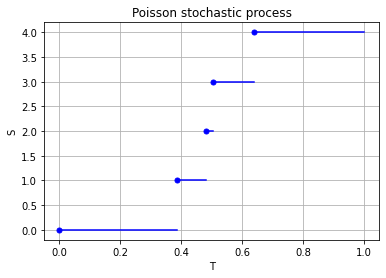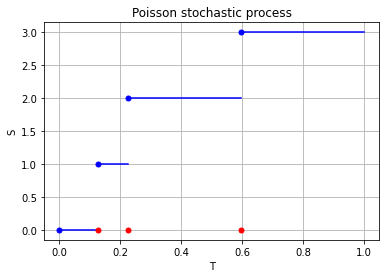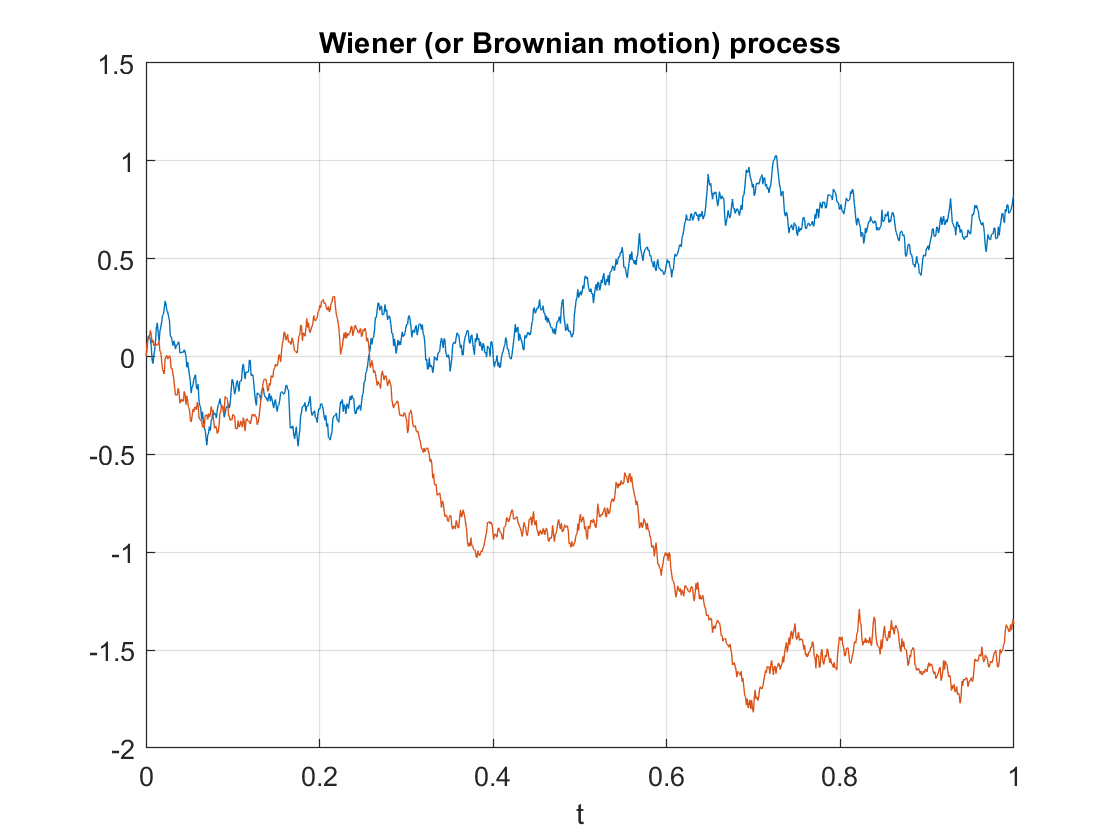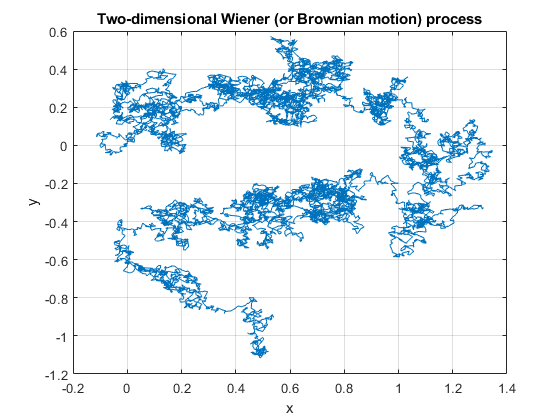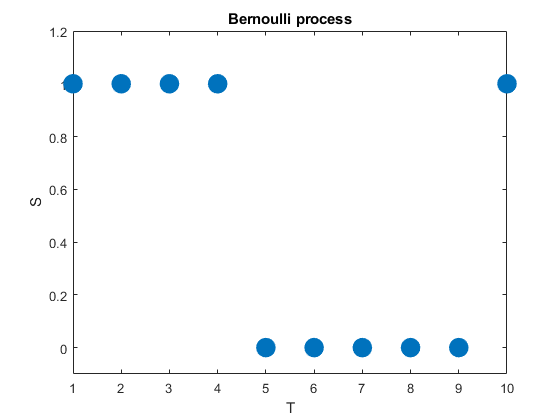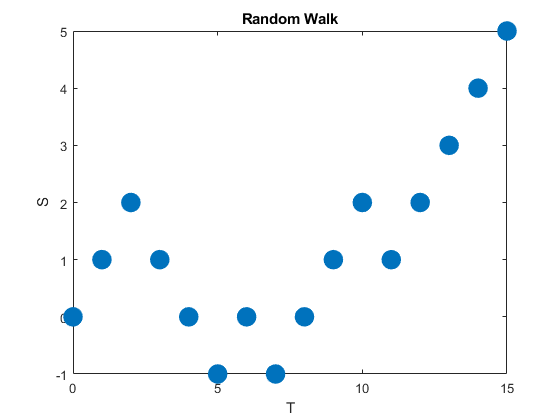Here’s a C implementation of the Metropolis(-Rosenbluth-Rosenbluth-Teller-Teller)-Hastings algorithm that can handle joint multi-variable probability densities, thus simulating a finite number of random variables. The Metropolis-Hastings algorithm is the central piece in Markov chain Monte Carlo (MCMC) methods. They have become essential in Bayesian statistics, where they are used to tackle high-dimensional integration. I have written a couple posts about these methods, starting with this one and ending with one.
My previous C code only works with densities of a couple variables. That code is covered in this post, which in turn is based on a previous post, in which I presented the algorithm implemented in the scientific programming languages Python, Julia, MATLAB and R. Those examples were for mostly illustration purposes, as there are already good pre-written libraries in those languages.
Code considerations
I’ll describe some considerations for implementing this algorithm in C. Some of this overlaps with what I wrote on the previous post. In writing this more general version of the code, I arguably cleaned up the old code, which is often the case when you generalize things in coding and mathematics.
Storing multi-dimensional values in C
In C, when handling sets of numbers, such as vectors and matrices, one has to use pointers and the malloc function more often that not, which can create headaches. For this algorithm, probably the most important data object is the one for storing the (current) positions of the multi-dimensional random walks across all the simulations run. This conceptually results in a rectangular grid or table of numbers. In mathematics, you would just use a \(d \times n\) matrix, where is \(d\) is the number of dimensions and \(n\) is the number of simulation runs.
In most programming languages, this table of numbers typically corresponds to a \(d \times n\) array. More specifically in C, you could do this with a multi-dimensional array or an array of pointers. But in this case, you don’t need to use the inherent structure of a matrix. Besides, any multi-dimensional array in C will be stored in memory as a one-dimensional array, so you can store the numbers in a simple one-dimensional array or vector with \(d \cdot n\) elements in total.1I’ve used the \(\cdot\) notation here to highlight the multiplication. The code does this using a single pointer.
Then using this vector, you just need to index (or map) between the vector and the matrix appropriately, which the code does with the (integer) variable indexSimDim. There are simple one-to-one mappings between elements in the vector and the elements in \(d \times n\) matrix. For example, matrix row \(i\) and column \(k\) corresponds to the element number \(m=i\cdot d+k\) in the vector; see the code below.
unsigned indexSimDim; // index for keeping track of two-dimensional data as a one-dimensional array // indexSimDim = i * numbDim + k, where i is simulation number and k is dimension number (minus one)This is a standard trick. In fact, you’ll see this type of line of code as necessary boilerplate in CUDA-based (and similar) code in kernels (routines) due to the inherent grid hierarchy of graphical processing units (GPUs). But that discussion deserves a post on its own.
Randomness in C
In previous posts, I’ve remarked that the standard uniform random number generator in C, called rand, is not good enough for research level randomness. That said, it works fine for regular simulations. The Mersenne Twister is a widely recommended and used algorithm for producing such numbers.
To simulate normal (or Gaussian) random variables, I wrote my own simple function using the Box-Muller transform, which I covered in a previous post, so the code would be self-contained. But in practice, you should always use pre-written and tested functions.
Code
The code can be found here, whereas other MCMC code can be found here and here. The joint probability density is defined in the function pdf_single.
/***********************************************************************
* Runs a simple Metropolis-Hastings (ie MCMC) algorithm to simulate n
* jointly distributed random variables with probability density p(x,y).
* For example:
* p(x,y)=exp(-(x^4+x*y+y^2+y*z+z^4)/s^2)/consNorm, where s>0 and consNorm is a
* normalization constant. The probability density function is defined in
* the function pdf_single.
*
* NOTE: In practice, the value of the normalization constant is not needed, as it cancels out in the algorithm.
*
* NOTE: This code will *create* a local file (see variable strFilename) to store results. It will *overwrite* that file if it already exists.
*
* WARNING: This code uses the default C random number generator, which is known for failing various tests of randomness.
* Strongly recommended to use another generator for purposes beyond simple illustration.
*
* Author: H. Paul Keeler, 2024.
* Website: hpaulkeeler.com
* Repository: github.com/hpaulkeeler/posts
*
***********************************************************/
#include <stdio.h>
#include <stdlib.h>
#include <time.h>
#include <math.h>
#include <stdbool.h>
#include <string.h>
const long double pi = 3.14159265358979323846; // constant pi for generating polar coordinates
// helper function declarations; see below for definitions
static double *unirand(double *randValues, unsigned numbRand); // generate uniform random variables on (0,1)
static double *normrand(double *randValues, unsigned numbRand, double mu, double sigma); // generate normal random variables
static double pdf_single(double *x_input, unsigned numbDim, double *parameters); // define probability density to be simulated
static double mean_var(double *set_sample, unsigned numbSim, double *varX); // calculate meana and variance
int main(int argc, char *argv[])
{
if (argc > 1)
{
fprintf(stderr, "This program takes no arguments...\n");
exit(1);
}
else
{
char strFilename[] = "MCMCData_ND.csv"; // filename for storing simulated random variates
// intializes (pseudo)-random number generator
time_t timeCPU; // use CPU time for seed
srand((unsigned)time(&timeCPU));
// srand(42); //to reproduce results
bool booleWriteData = true; // write data to file
bool booleStats = true; // perform simple mean/std stats
unsigned numbDimMax = 3; //upper bound on number of dimensions for which stats are calculated and printed out
// simulation parameters
unsigned numbSim = 1e4; // number of random variables simulated
unsigned numbSteps = 200; // number of steps for the Markov process
double sigma = 2; // standard deviation for normal random steps
// probability density parameters
double s = .5; // scale parameter for distribution to be simulated
unsigned numbDim = 3;
// Metropolis-Hastings variables
// proposal for a new position in the random walk
double *tRandProposal = (double *)malloc(numbDim * sizeof(double));
double pdfProposal; // density for proposed position
double pdfCurrent; // density of current position
double ratioAccept; // ratio of densities (ie acceptance probability)
double uRand; // uniform variable for Bernoulli trial (ie a coin flip)
// random step (normally distributed)
double *p_numbNormT = (double *)malloc(1 * sizeof(double));
// positions of the random walk (ie the simualted random variables after numbSteps)
double *p_tRand = (double *)malloc(numbDim * numbSim * sizeof(double));
unsigned i, j, k; // loop varibales
unsigned indexSimDim; // index for keeping track of two-dimensional data as a one-dimensional array
// Typically indexSimDim = i * numbDim + k, where i is simulation number and k is dimension number (minus one)
double *p_tRandCurrent = (double *)malloc(numbDim * sizeof(double));
(void)unirand(p_tRand, numbDim * numbSim); // random initial values
for (i = 0; i < numbSim; i++)
{
// loop through each random walk instance (or random variable to be simulated)
for (k = 0; k < numbDim; k++)
{
// loop through dimensions
indexSimDim = i * numbDim + k;
// update state of random walk / Markov chain
*(p_tRandCurrent + k) = *(p_tRand + indexSimDim);
}
pdfCurrent = pdf_single(p_tRandCurrent, numbDim, & s); // current probability density
for (j = 0; j < numbSteps; j++)
{
// loop through each step of the random walk
for (k = 0; k < numbDim; k++)
{
// loop through dimensions
indexSimDim = i * numbDim + k;
(void)normrand(p_numbNormT, 1, 0, sigma);
// take a(normally distributed) random step in x, y and y
*(tRandProposal+k) = *(p_tRand + indexSimDim) + *(p_numbNormT);
}
pdfProposal = pdf_single(tRandProposal, numbDim, & s); // proposed probability density
// acceptance rejection step
(void)unirand(&uRand, 1);
ratioAccept = pdfProposal / pdfCurrent;
if (uRand < ratioAccept)
{
for (k = 0; k < numbDim; k++)
{
// loop through dimensions
indexSimDim = i * numbDim + k;
// update state of random walk / Markov chain
*(p_tRand + indexSimDim) = tRandProposal[k];
}
pdfCurrent = pdfProposal;
}
}
}
free(p_numbNormT);
if (booleStats)
{
// initialize statistics variables (for testing results)
double *p_AllRand = (double *)malloc(numbSim * sizeof(double));
double meanTemp = 0;
double varTemp = 0;
double stdTemp = 0;
unsigned numbDimStats = fmin(numbDimMax, numbDim); //number of dimensions for which stats are calculated and printed out
for (k = 0; k < numbDimStats; k++)
{
// loop through all the dimensions
for (i = 0; i < numbSim; i++)
{
// collect variables for dimension k+1
indexSimDim = i * numbDim + k;
*(p_AllRand + i) = *(p_tRand + indexSimDim);
}
meanTemp = mean_var(p_AllRand, numbSim, &varTemp);
stdTemp = sqrt(varTemp);
printf("The average of dimension %d random variables is %lf.\n", k + 1, meanTemp);
printf("The standard deviation of dimension %d random variables is %lf.\n", k + 1, stdTemp);
}
}
if (booleWriteData)
{
// print to file
FILE *outputFile;
outputFile = fopen(strFilename, "w");
// create string of spacers (ie commas and newlines)
char *strSpacer = (char *)malloc((numbDim + 1) * sizeof(char));
for (k = 0; k < numbDim - 1; k++)
{
*(strSpacer + k) = ',';
}
strSpacer[numbDim - 1] = '\n';
strSpacer[numbDim] = '\0';
for (i = 0; i < numbSim; i++)
{
for (k = 0; k < numbDim; k++)
{
indexSimDim = i * numbDim + k;
fprintf(outputFile, "%lf%c", *(p_tRand + indexSimDim), strSpacer[k]);
}
}
fclose(outputFile);
printf("Data printed to file.\n");
}
free(p_tRand);
return (0);
}
}
static double pdf_single(double *x_input, unsigned numbDim, double *parameters)
{
// returns the probability density of a single point inside a simulation window defined below
double pdf_output = 0; //probability density at a single point
// non-zero density square window parameters
double xMin = -1;
double xMax = 1;
// retrieve variables
double x = *(x_input + 0);
double y = *(x_input + 1);
double z = *(x_input + 2);
// retrieve scale parameter
double s = *(parameters + 0);
int i;
//check point is inside simulation window
bool booleInsideWindow = true;
for (i = 0; i < numbDim; i++){
booleInsideWindow = booleInsideWindow &1;
}
// define probability density
if (booleInsideWindow)
{
// evaluate probability density
pdf_output = exp(-((pow(x, 4) + x * y + pow(y, 2) + y * z + pow(z, 4)) / (s * s)));
}
else
{
pdf_output = 0;
}
return pdf_output;
}
static double *normrand(double *randValues, unsigned numbRand, double mu, double sigma)
{
// simulate pairs of iid normal variables using Box-Muller transform
// https://en.wikipedia.org/wiki/Box%E2%80%93Muller_transform
double U1, U2, thetaTemp, rhoTemp, Z1, Z2;
int i = 0;
while (i < numbRand)
{
// simulate variables in polar coordinates (theta, rho)
(void)unirand(&U1, 1);
thetaTemp = 2 * pi * U1; // create uniform theta values
(void)unirand(&U2, 1);
rhoTemp = sqrt(-2 * log(U2)); // create Rayleigh rho values
// change to Cartesian coordinates (Z1, Z2)
Z1 = rhoTemp * cos(thetaTemp);
Z1 = sigma * Z1 + mu;
randValues[i] = Z1; // assign first of random variable pair
i++;
if (i < numbRand)
{
// if more variables are needed, generate second value of random pair
Z2 = rhoTemp * sin(thetaTemp);
Z2 = sigma * Z2 + mu;
randValues[i] = Z2; // assign second of random variable pair
i++;
}
else
{
break;
}
}
return randValues;
}
static double *unirand(double *randValues, unsigned numbRand)
{ // simulate numbRand uniform random variables on the unit interval
// storing them in randValues which must be allocated by the caller
// with enough space for numbRand doubles
for (int i = 0; i < numbRand; i++)
{
randValues[i] = (double)rand() / RAND_MAX;
}
return randValues;
}
static double mean_var(double *set_sample, unsigned numbSim, double *varX)
{
// mean and variance of set_sample
int i;
// initialize statistics variables (for testing results)
double meanX = 0;
double meanXSquared = 0;
double tempX;
for (i = 0; i < numbSim; i++)
{
tempX = *(set_sample + i);
meanX += tempX / ((double)numbSim);
meanXSquared += tempX * tempX / ((double)numbSim);
}
*varX = meanXSquared - meanX * meanX;
return meanX;
}- x_input[i] >= xMin) & (x_input[i] <= xMax [↩]


